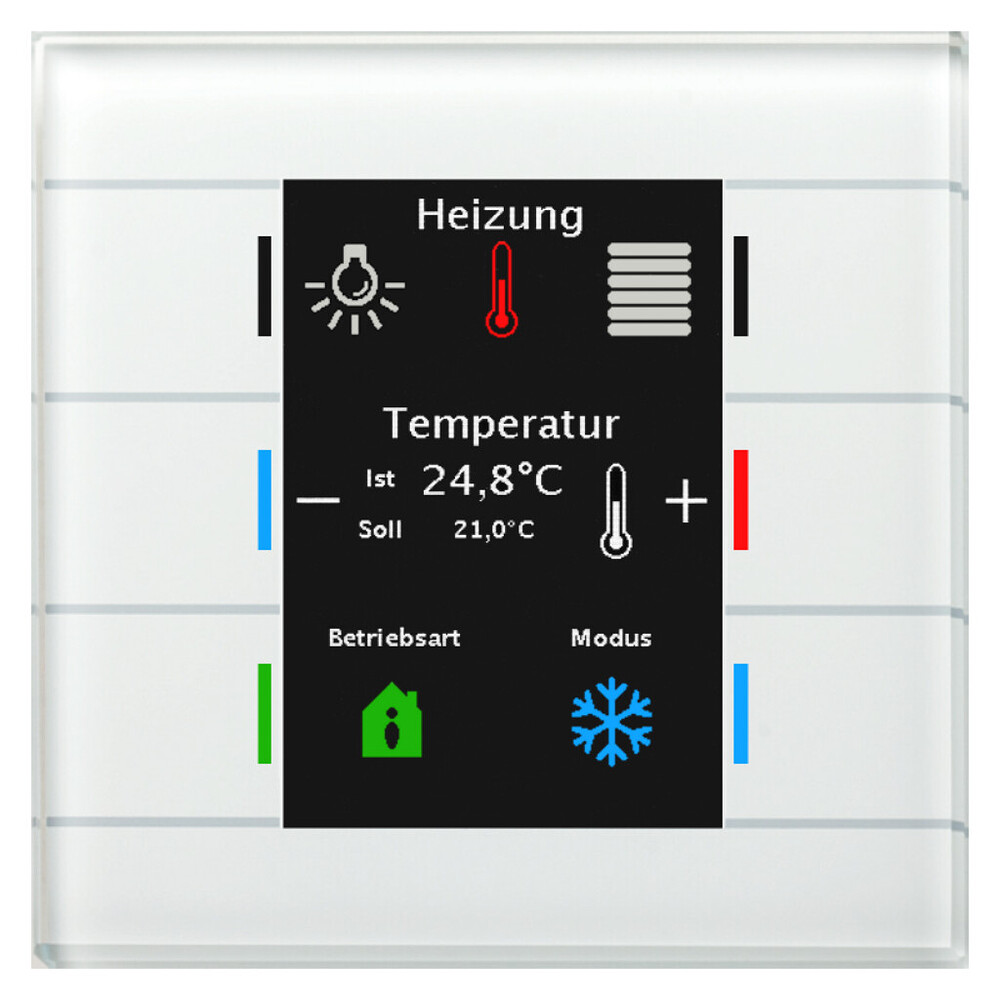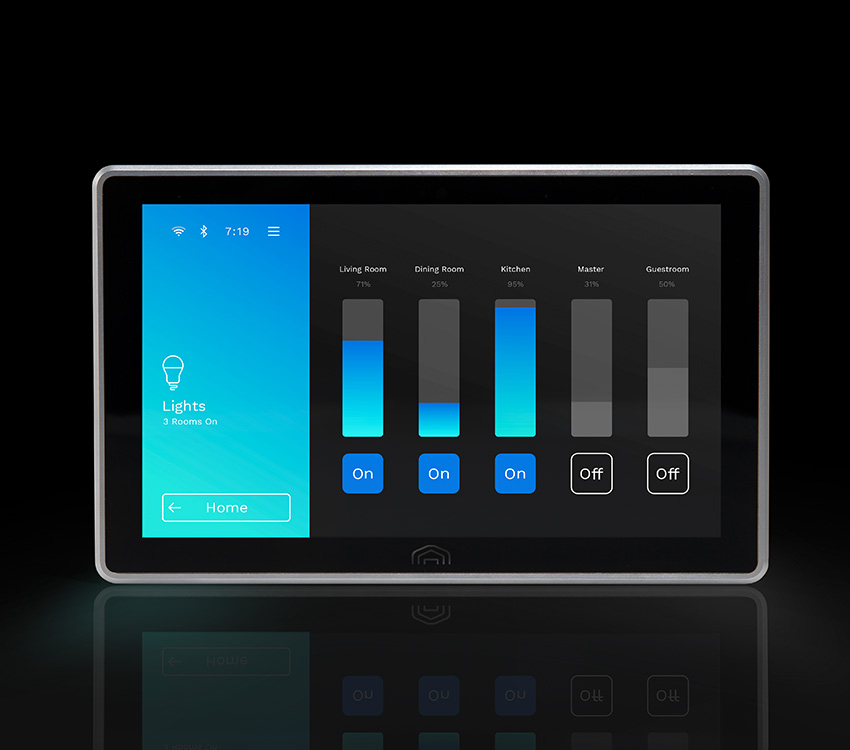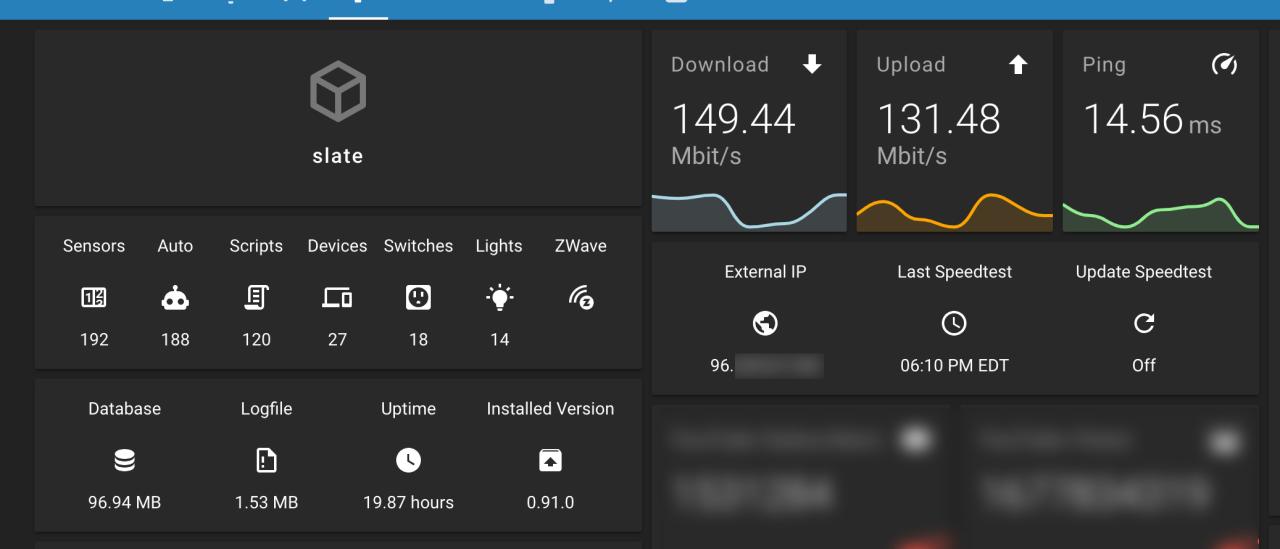homeassistant switch sets the stage for this enthralling narrative, offering readers a glimpse into a story that is rich in detail with innovative approaches to modern living. These smart devices are not just ordinary switches; they embody the future of home automation, allowing users to control their environments with unprecedented ease and efficiency.
Understanding what a home assistant switch is and how it functions can transform your daily routines. With various types available on the market, these switches can seamlessly integrate into your existing smart home systems, providing functionalities that extend far beyond mere on/off capabilities. From intuitive control interfaces to compatibility with numerous devices, the home assistant switch is pivotal in creating a cohesive smart home experience.
Home Assistant Switch Overview: Homeassistant Switch

Home assistant switches are pivotal components in the realm of smart home technology, designed to enhance convenience, control, and energy efficiency within residential settings. These devices facilitate the management of connected appliances and lights through a centralized hub or mobile application, allowing users to automate tasks and optimize their home environment.
Understanding the various types of home assistant switches available in the market is essential for selecting the right option for your needs. These switches can generally be categorized into several types based on their connectivity and functionalities.
Types of Home Assistant Switches
A variety of home assistant switches exist, each offering unique characteristics and capabilities. Below are the primary types of switches:
- Smart Light Switches: These switches replace traditional light switches and enable control over lighting through smartphone apps or voice commands. They often include features such as dimming capabilities and scheduling options.
- Smart Plug Switches: Smart plugs allow any standard appliance to be controlled remotely. They can turn devices on or off, monitor power usage, and even schedule operation times.
- Dimmer Switches: These specialized smart switches enable users to adjust the brightness of their lights, which can create different atmospheres in a room and help save energy.
- Multi-Function Switches: These switches combine multiple functionalities, such as controlling lights and appliances, along with integration for sensors and other smart devices.
Functionalities of Home Assistant Switches in Smart Homes
Home assistant switches serve multiple critical functions that contribute to the effectiveness of smart home systems. They enhance user experience by providing automation, energy management, and remote access, making them integral to modern living spaces.
- Automation: Switches can be programmed to operate according to schedules or triggered by specific events, such as motion detection or time of day, ensuring that homes run efficiently even when occupants are away.
- Remote Control: Users can control their devices from anywhere using smartphones or voice assistants, providing unparalleled convenience in managing home environments.
- Energy Monitoring: Many smart switches offer built-in energy monitoring features that allow users to track power consumption, helping to identify potential savings and reduce overall energy costs.
- Voice Control Integration: Compatibility with voice assistants like Amazon Alexa or Google Assistant enables hands-free operation, enhancing usability for all household members.
Home assistant switches not only offer convenience but also play a crucial role in promoting energy efficiency within smart homes.
Setting Up Home Assistant Switches

Setting up Home Assistant switches is a crucial step in transforming your home into a smart living environment. This process allows you to control various appliances and devices remotely, integrating them seamlessly into your home automation system.
To properly install and configure a Home Assistant switch, follow the detailed steps Artikeld below. With the right setup, you can ensure compatibility and functionality across your home network, making your automation experience smooth and efficient.
Step-by-Step Guide for Installing a Home Assistant Switch
A successful installation involves a series of methodical steps, from selecting the appropriate switch to ensuring it communicates effectively with your Home Assistant instance. Here’s how to do it:
1. Choose the Right Switch: Ensure the switch you select is compatible with Home Assistant. Popular options include smart Wi-Fi switches or Zigbee switches.
2. Connect the Switch to Power: Install the switch in your wall’s electrical box and connect it to the power supply according to the manufacturer’s instructions.
3. Download the Home Assistant App: If you haven’t already done so, download the Home Assistant app on your smartphone or access the interface via a web browser.
4. Add the Switch to Home Assistant: Navigate to the Integrations section in the Home Assistant dashboard. Click on ‘Add Integration’ and follow the prompts to locate your chosen switch.
5. Configure the Switch: Once added, you may need to customize the switch settings, such as naming it and assigning it to a specific room or function in your home.
6. Test the Switch: After configuration, test the switch to ensure it responds correctly from your Home Assistant dashboard and via voice commands if integrated with a voice assistant.
Integrating the Switch with Home Automation
Integrating your Home Assistant switch into your broader home automation system enhances its functionality. This involves linking the switch with other devices and creating automation routines.
To effectively integrate the switch, consider the following points:
– Linking with Other Devices: Ensure that your switch is connected with other smart devices, such as lights or thermostats, to allow for coordinated actions based on your preferences.
– Create Automation Rules: Use the Automation feature in Home Assistant to set triggers and actions. For instance, you can program the switch to turn on specific lights when entering a room.
– Use Scenes for Control: Group multiple devices and controls into scenes for easier management. For example, creating a “Movie Night” scene that dims lights and turns on the TV with a single command.
Troubleshooting Common Setup Issues, Homeassistant switch
Despite following the correct installation procedures, users may encounter issues during setup. Familiarizing yourself with common troubleshooting tips can make resolving these issues easier.
Consider the following troubleshooting strategies:
– Check Wi-Fi Connectivity: Ensure that your switch is connected to the same Wi-Fi network as your Home Assistant server. A simple restart of your router may solve connectivity issues.
– Verify Compatibility: Double-check that the switch supports the latest Home Assistant version. If it does not, look for firmware updates or consider a different model.
– Inspect Power Supply: Confirm that the switch is receiving power. If the lights aren’t functioning, check your circuit breaker and ensure the switch is correctly wired.
– Review Logs: Utilize the Home Assistant logs to identify errors related to the switch. The logs can provide insights into connectivity or configuration issues that need rectification.
“Successful integration of Home Assistant switches can significantly enhance the functionality and convenience of your smart home.”
Home Assistant Switch Features and Benefits

The evolution of smart home technology has ushered in a new era of convenience and efficiency, and Home Assistant switches are at the forefront of this transformation. These innovative devices offer a myriad of features designed to enhance the functionality of smart homes, allowing users to manage their environments with ease and precision. The flexibility and versatility of Home Assistant switches set them apart from traditional switches, making them an essential component of modern home automation systems.
Home Assistant switches come with several key features that not only simplify user interaction but also expand the capabilities of home automation. These features contribute significantly to energy management, security, and overall user experience.
Key Features of Home Assistant Switches
Several standout features make Home Assistant switches a preferred choice for smart home enthusiasts. These features include:
- Remote Control: Home Assistant switches allow users to control devices from anywhere through a smartphone or computer, making it easy to manage home settings even when away.
- Integration with Other Smart Devices: They seamlessly integrate with various smart home devices, such as lights, thermostats, and security systems, allowing for comprehensive automation scenarios.
- Customizable Automations: Users can create personalized automation routines based on triggers like time of day, device status, or even location, enhancing the convenience of daily tasks.
- Energy Monitoring: Many Home Assistant switches come equipped with energy monitoring capabilities, helping users track energy consumption and make informed decisions about usage.
- Voice Control Compatibility: Many switches are compatible with voice assistants like Amazon Alexa and Google Assistant, providing hands-free control for added convenience.
These features significantly enhance the user experience, making Home Assistant switches not just functional, but also an essential part of a smart home ecosystem.
Benefits of Home Assistant Switches Over Traditional Switches
The transition from traditional switches to Home Assistant switches offers numerous benefits that cater to the demands of modern living. One of the primary advantages is the ability to automate everyday tasks, which can lead to improved energy efficiency and convenience.
The following benefits illustrate why Home Assistant switches are a superior choice:
- Increased Convenience: Home Assistant switches allow users to control devices remotely, eliminating the need to be physically present to turn devices on or off.
- Enhanced Security Features: Automated schedules can simulate occupancy, providing a layer of security for homes while owners are away.
- Cost Savings: By monitoring energy usage, users can identify high-consumption devices and adjust their habits, leading to lower utility bills.
- Scalability: Home Assistant switches can easily be added to an existing smart home setup, allowing for gradual upgrades without the need for extensive rewiring.
- User-Friendly Interface: With intuitive applications for smartphones and tablets, managing home devices is straightforward and accessible to all family members.
These benefits underscore the practical advantages of integrating Home Assistant switches into everyday life, making them an ideal choice for those looking to enhance their smart home capabilities.
Automation Scenarios Utilizing Home Assistant Switches
Home Assistant switches open up a world of possibilities through automation, allowing users to create scenarios that adapt to their lifestyles. Here are some illustrative examples of effective automation scenarios:
- Morning Routine Automation: At a designated time in the morning, the switch can turn on kitchen appliances such as coffee makers and toasters, while also activating lights gradually to simulate sunrise, ensuring a smooth wake-up experience.
- Vacation Mode: When the home is unoccupied, the switches can randomly turn lights on and off in different rooms to create the illusion that someone is home, deterring potential intruders.
- Energy-Saving Mode: Home Assistant switches can be programmed to turn off non-essential devices when the household is empty, reducing energy consumption and costs.
- Movie Night Setting: With a single command, users can dim the lights, turn on the home theater system, and adjust the thermostat, creating an ideal environment for entertainment.
These automation scenarios showcase the versatility and practicality of Home Assistant switches, demonstrating their ability to simplify daily life while enhancing comfort and security in smart homes.
Best Practices for Using Home Assistant Switches
When integrating Home Assistant switches into your smart home setup, it is essential to prioritize safety and maintenance to ensure optimal functionality and longevity. Adhering to best practices will not only protect your devices but also enhance your overall experience with smart technology.
Safety Precautions for Using Home Assistant Switches
To minimize risks associated with electrical devices, it is crucial to follow established safety guidelines. These precautions help prevent accidents or damage to your home and devices.
- Always use switches rated for the specific voltage and current of your devices to avoid overheating and potential fires.
- Ensure that your wiring is up to code and that switches are installed by a qualified electrician if you are not experienced with electrical work.
- Regularly check for signs of wear or damage on cords and plugs; replace any defective components immediately.
- Avoid overloading outlets by connecting multiple high-power devices to the same switch or power strip.
- Keep moisture away from switches and electrical connections, as water can cause short circuits or electrocution hazards.
- Implement surge protection to shield your devices from voltage spikes that can occur during storms or electrical outages.
Recommended Maintenance Practices for Longevity
Maintaining your Home Assistant switches can significantly extend their lifespan and ensure reliable performance. Regular upkeep helps to identify issues before they escalate.
- Perform periodic inspections, looking for signs of wear, corrosion, or loose connections.
- Keep your switches clean by dusting them regularly; use a soft, dry cloth to prevent moisture damage.
- Update the firmware of your switches as needed. Manufacturers often release updates that enhance performance and security.
- Ensure that the network connection for smart switches is stable and strong to prevent connectivity issues.
- Incorporate a routine check of the Home Assistant platform to ensure all integrations and automations are functioning correctly.
Comparison of Popular Home Assistant Switches
When choosing a Home Assistant switch, comparing features and prices can help you make an informed decision. Below is a comparative table highlighting some popular options on the market.
| Switch Model | Features | Price |
|---|---|---|
| TP-Link Kasa Smart Wi-Fi Plug | Remote control, voice assistant compatibility, energy monitoring | $24.99 |
| Wemo Mini Smart Plug | Compact design, integrates with Apple HomeKit, easy setup | $34.99 |
| Amazon Smart Plug | Simple setup, Alexa integration, reliable performance | $24.99 |
| Gosund Smart Plug | Scheduling, remote control, compatible with Google Assistant | $19.99 |
Essential Questionnaire
What is a homeassistant switch?
A homeassistant switch is a smart device that allows users to control electrical devices remotely through a home automation system.
How do I integrate a homeassistant switch with my system?
Integration typically requires following a setup guide provided by the manufacturer, which usually involves connecting the switch to your Wi-Fi network and configuring it in the home automation app.
Can I use multiple homeassistant switches in one home?
Yes, multiple homeassistant switches can be used throughout your home, allowing for extensive automation and control of various devices.
Are homeassistant switches compatible with all smart home systems?
While many homeassistant switches are designed to work with popular smart home ecosystems, compatibility can vary, so it’s essential to check specifications before purchasing.
What maintenance is required for homeassistant switches?
Regularly check connections and firmware updates to ensure optimal performance, and clean the switch’s exterior with a soft cloth to maintain its appearance.
The sonoff hub is a powerful device that allows you to control multiple smart devices from one central point. With this hub, managing your home automation systems becomes much easier, enabling seamless integration of various smart gadgets. Whether you’re looking to enhance your home security or streamline your daily routines, the Sonoff Hub is an essential addition to your smart home setup.
If you’re looking for reliable automation, the wifi switch 12v is an excellent choice. This device allows you to control electrical appliances using your smartphone or tablet, making it perfect for remote management. Its 12V compatibility ensures it can be used with a variety of devices, providing both convenience and flexibility for modern living.